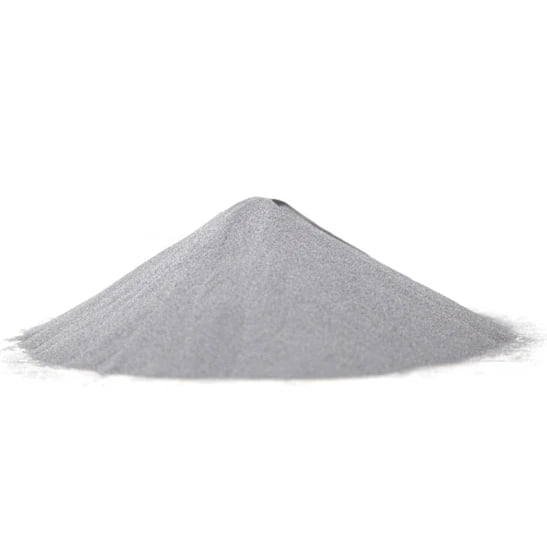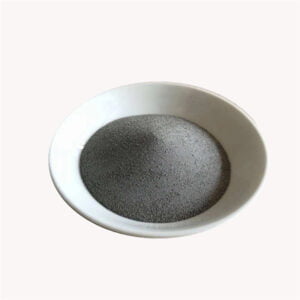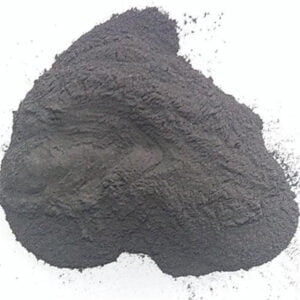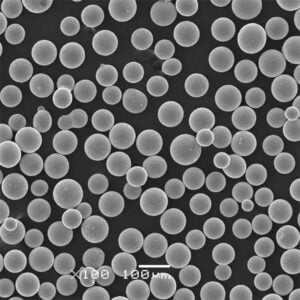Comparison of Plasma atomization with other metal powder production
Obsah
Imagine sculpting intricate objects not from clay or wood, but from tiny, almost magical, metallic particles. This futuristic vision underpins the revolutionary world of additive manufacturing (AM), also known as 3D printing. But these metallic building blocks, known as kovové prášky, need a specialized creation process – and that’s where atomizace plazmatu takes center stage.
But what exactly is plasma atomization, and how does it stack up against other metal powder production methods? Buckle up, because we’re about to embark on a journey into the heart of metal powder production!
Metal Powders: The Building Blocks of a New Era
Metal powders are finely divided metallic particles, typically ranging in size from 10 to 150 micrometers (μm). These tiny giants boast unique properties like:
- High flowability: They move and pack easily, making them ideal for AM processes.
- Kulovitý tvar: This ensures consistent packing density and minimizes voids in the final product.
- Vysoká čistota: They contain minimal impurities, leading to superior mechanical properties in the finished product.
These remarkable properties make metal powders invaluable in various industries, including:
- Letectví: Lightweight and high-strength components for rockets and airplanes.
- Automobilový průmysl: Creating complex engine parts and lightweight car bodies.
- Lékařský: Biocompatible implants and custom prosthetics.
- Spotřební elektronika: Intricate antenna structures and heat sinks.

The Power of Plasma: Unveiling the Technology
Plasma atomization (PA) is a high-energy process that utilizes an ionized gas, called plasma, to create kovové prášky. Here’s a breakdown of the magic behind PA:
- Feedstock preparation: The desired metal, usually in the form of wire or rod, is fed into the system.
- Plasma generation: Inert gas (like argon or helium) is superheated using an electric arc, transforming it into plasma with extremely high temperatures (around 15,000°C).
- Atomizace: The molten metal feedstock is injected into the high-velocity plasma stream, causing it to disintegrate into fine droplets.
- Ztuhnutí: The rapidly cooling droplets solidify mid-air, forming spherical metal powder particles.
- Collection and classification: The powder is collected, cooled, and sieved into various sizes based on specific application requirements.
Compared to traditional methods like mechanical milling, PA offers several advantages:
- Finer and more spherical powder particles: This translates to better flowability, packing density, and final product quality.
- Higher purity: The high temperatures in the plasma chamber minimize oxidation and contamination.
- Greater control over powder size and morphology: PA allows for tailoring the powder characteristics to specific needs.
However, PA also comes with its own set of challenges:
- High energy consumption: The process requires significant electrical power, impacting its environmental footprint and cost.
- Complex and expensive equipment: Setting up and maintaining a PA system is more capital-intensive compared to other methods.
- Limited material compatibility: Not all metals can withstand the extreme temperatures of the plasma stream, restricting the variety of powders produced.
A Landscape of Options: Exploring Other Kovový prášek Výrobní metody
While PA reigns supreme in specific applications, several other methods are used for metal powder production, each with its own strengths and limitations:
| Metoda | Popis | Výhody | Nevýhody |
|---|---|---|---|
| Gas atomization (GA) | Similar to PA, but uses a high-velocity inert gas stream instead of plasma for atomization. | Lower energy consumption than PA, wider material compatibility. | Coarser and less spherical powder particles compared to PA. |
| Water atomization (WA) | Uses a high-pressure water jet to atomize molten metal. | Cost-effective, suitable for large-scale production. | Relatively high oxide content, irregular particle shapes, limited size control. |
| Centrifugal atomization (CA) | Molten metal is atomized by centrifugal force as it exits a rotating disk. | High production rate, suitable for low-melting-point metals. | Limited powder size control, broad particle size distribution. |
| Electrolytic atomization (EA) | Uses an electrolytic process to break down metal ions into fine particles. | High purity powders, suitable for reactive metals. | Slow production rate, high energy consumption, limited powder size range. |
Metal Powders in Action: A Showcase of Applications
The specific type of metal powder chosen for an application depends on various factors, including:
- Desired final product properties: Strength, weight, corrosion resistance, etc.
- AM process used: Each AM process might have specific powder size and flowability requirements.
- Úvahy o ceně: Different production methods have varying costs associated with them.
Here are some specific examples of metal powders and their applications:
| Kovový prášek | Složení | Způsob výroby | Aplikace |
|---|---|---|---|
| Titanium (Ti) powders: | > 99% Ti | PA, GA | Aerospace components (e.g., aircraft landing gear, rocket engine parts), biomedical implants, sports equipment |
| Aluminum (Al) powders: | > 99% Al | WA, GA | Automotive components (e.g., engine blocks, heat sinks), consumer electronics (e.g., housings, heat sinks), food packaging |
| Stainless steel (SS) powders: | Varies depending on the specific SS grade | PA, GA | Medical instruments, chemical processing equipment, jewelry, tools |
| Nickel (Ni) powders: | > 99% Ni | PA, GA | Superalloy components for high-temperature applications (e.g., turbine blades, heat exchangers), battery electrodes |
| Cobalt (Co) powders: | > 99% Co | PA, GA | Hardfacing materials for wear resistance, dental implants, magnetic components |
It’s important to note that this list is not exhaustive, and new metal powders and applications are constantly being developed. As AM technology continues to evolve, the demand for high-quality, diverse metal powders is expected to grow significantly.
The Price of Progress: A Look at Cost Considerations
Náklady na kovové prášky varies depending on several factors, including:
- Metal type: Rare and exotic metals are generally more expensive than common metals.
- Production method: PA powders are typically more expensive than those produced by methods like WA or CA due to the higher energy consumption and equipment costs involved.
- Powder purity and size: High purity and specific size ranges command a premium price.
It’s crucial to consider the cost factor when selecting a metal powder for an AM application, as it can significantly impact the overall project cost. Finding the right balance between cost, performance, and desired properties is key for successful AM projects.

Nejčastější dotazy
Q: What are the different types of metal powders available?
A: As discussed earlier, various metal powders exist, with the most common ones being based on titanium, aluminum, stainless steel, nickel, and cobalt. Each material boasts unique properties making them suitable for specific applications.
Q: How are metal powders used in 3D printing?
A: Metal powders are loaded into a 3D printer, where they are selectively deposited layer by layer based on a digital design. The deposited layers then fuse together, creating a three-dimensional object.
Q: What are the key factors to consider when choosing a metal powder?
A: Several factors play a role, including the desired final product properties (strength, weight, etc.), compatibility with the chosen AM process, cost considerations, and the specific application requirements.
Q: What are the future trends in metal powder production?
A: The future is expected to see advancements in PA technology, making it more energy-efficient and cost-effective. Additionally, research is ongoing to develop new metal powders with improved properties and expand the range of materials suitable for AM applications.
With its unique properties and diverse applications, metal powder technology is poised to play a pivotal role in shaping the future of manufacturing. By understanding the different production methods, available materials, and key considerations, users can unlock the vast potential of metal powders and contribute to groundbreaking advancements across various industries.
Sdílet na
MET3DP Technology Co., LTD je předním poskytovatelem řešení aditivní výroby se sídlem v Qingdao v Číně. Naše společnost se specializuje na zařízení pro 3D tisk a vysoce výkonné kovové prášky pro průmyslové aplikace.
Dotaz k získání nejlepší ceny a přizpůsobeného řešení pro vaše podnikání!
Související články
O Met3DP
Nedávná aktualizace
Náš produkt
KONTAKTUJTE NÁS
Nějaké otázky? Pošlete nám zprávu hned teď! Po obdržení vaší zprávy obsloužíme vaši žádost s celým týmem.

Kovové prášky pro 3D tisk a aditivní výrobu
SPOLEČNOST
PRODUKT
kontaktní informace
- Město Qingdao, Shandong, Čína
- [email protected]
- [email protected]
- +86 19116340731


















